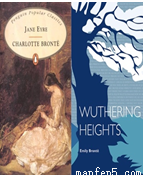题目内容
"Oh, my God! Did I really just send that text?" Most people have said something that they wish they could take back. And if they had paused to think about it first, they probably would have acted differently. Pausing doesn't pay off just when you speak. Scientific studies have shown that making a habit of pausing before you do something can actually have a big impact on how your life turns out.
In making decisions we rely on two areas of the brain. One area creates and processes emotions; the other governs logical thought. The type of decision, how we feel about it, and how prepared we are to handle it help determine which brain area has the most influence.
But our age also plays an important role. Thinking through the consequences of one's actions is actually harder for teens because the area controlling logical (逻辑的)thought is not fully developed until around age 25. This is why teens often feel an intense emotional drive to act impulsively(冲动地)---it's how their brains are structured! Though this tendency to act without considering the outcomes can lead to problematic situations, impulsivity during the developmental years evolves because it makes teens more open to new experiences and ideas. This openness helps teens to become independent adults.
The key to making impulsivity work for you instead of against you is to train your brain by practicing pausing. This doesn't mean you stop taking risks or being open to new experiences. But you won't know if the risk is worth it until you think it through. Deciding to take a risk based on logic shows self-control, not impulsivity.
What are different ways to pause? You might take a deep breath, count to 10, or ask "Is this worth it?" different strategies work for different people. Whatever works for you, keep doing it! By practicing pausing, you can actually change your brain. This means that over time, pausing, instead of immediately reacting, becomes your "natural" response.
And with this change, people are on their way to enjoying the life rewards that come with high levels of self-control---even if they weren't natural-born pausers!
1.What challenges teenagers?
A. Giving natural response. B. Making logical decision.
C. Acting before thorough thinking. D. Choosing brain-training strategies.
2.An impulsive person tends to____.
A. consider or accept new ideas B. change ideas frequently
C. think through a risk in advance D. show high level of self-control
3.According to the passage, by training one's brain, one can____.
A. stop taking risks
B. fully develop one's brain
C. become more open to new experience
D. reduce the influence of emotional drive
4.What is the best title for the passage?
A. Push the Pause Button B. Impulsivity Works
C. Discover the Brain Function D. Crying Over the Spilt Milk
| A. | combine | B. | combined | C. | combining | D. | being combined |
| A. | concert | B. | strange | C. | blanket | D. | autumn |



